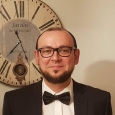Keynote Speakers
2026 11th International Conference on Intelligent Information Technology (ICIIT) aims to gather professors, researchers, scholars and industrial pioneers all over the world. ICIIT is the premier forum for the presentation and exchange of past experiences and new advances and research results in the field of theoretical and industrial experience. The conference welcomes contributions which promote the exchange of ideas and rational discourse between educators and researchers all over the world. We aim to building an idea-trading platform for the purpose of encouraging researcher participating in this event. ICIIT 2026 is welcome qualified persons to delivery a speech in the related fields. If you are interested, please send a brief CV with photo to the conference email box: iciit@cbees.net.

Prof. Leandro Soares Indrusiak
University of Leeds, UK
Leandro Soares Indrusiak is a Professor of Distributed Systems at the School of Computer Science of the University of Leeds. His current research topics include real-time systems and networks, distributed embedded systems, on-chip multiprocessing, energy-efficient computing, cyber-physical systems, cloud and high-performance computing, and several types of resource allocation problems (in computing, manufacturing and transportation). He has published more than 150 peer-reviewed papers in the main international conferences and journals covering those topics (nine of them received best paper awards). He is or has been a principal investigator in projects funded by EU, EPSRC, DFG, British Council and industry. He is a member of the EPSRC College, a senior member of the IEEE, a member of the editorial board of ACM Transactions on Cyber-Physical Systems, and a member of the HiPEAC European Network of Excellence. He currently holds a honorary professorship at the University of York, and has previously held visiting lectureships in five different countries. He graduated in Electrical Engineering from Universidade Federal de Santa Maria in 1995, obtained a MSc in Computer Science from Universidade Federal do Rio Grande do Sul in 1998, and was issued a binational doctoral degree by Universidade Federal do Rio Grande do Sul and Technische Universitaet Darmstadt in 2003. Prior to his appointment at Leeds, he had academic positions with research and teaching responsibilities at the University of York (2008-2023), Technische Universitaet Darmstadt (2001-2008) and Pontificia Universidade Catolica do Rio Grande do Sul (1998-2000).
Speech Title: "AI Support for Performance-Critical Embedded Systems"
Abstract: Embedded systems operating in critical domains—such as autonomous control, industrial automation, and real-time monitoring—must meet strict performance requirements, particularly in terms of latency and timing guarantees. These systems are often deployed in environments where delayed or unpredictable responses can lead to unacceptable outcomes, making the ability to assess and ensure timeliness a key concern. AI techniques are increasingly being considered to support these systems, especially in managing their interaction with complex and uncertain environments. However, the probabilistic nature of AI methods introduces challenges in achieving the level of precision and predictability required for performance-critical applications. This keynote will focus on the tension between the probabilistic nature of AI and the need for bounded timing behaviour. The talk will discuss how AI can help reduce uncertainty in environmental interactions, improving the ability to reason about system behaviour in real-time. It will then explore state-of-the-art research on how AI techniques can support the creation of models that predict system latency and evaluate performance under worst-case conditions.
